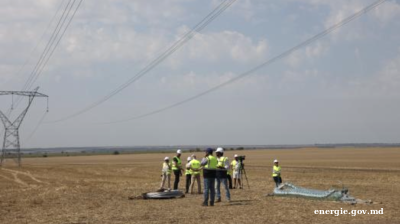A new report from the Lee Kuan Yew School of Public Policy (LKYSPP) has called on ASEAN governments to seize a narrowing window of opportunity to drive transformative economic growth through the convergence of 5G and artificial intelligence (AI), the Vietnam Investment Review (VIR) reports.
Titled Leveraging 5G to Accelerate AI-Driven Transformation in ASEAN: Imperatives, Policy Insights, and Recommendations, the study outlines a framework to unlock the region’s digital potential and secure its position in the future global economy. The report draws on survey responses and interviews with over 400 professionals across eight ASEAN member states.
It forecasts that 5G alone could contribute up to $130bn to the Asia-Pacific economy by 2030. However, adoption across ASEAN remains patchy, with Singapore reporting 48.3% penetration, while several other countries lag significantly behind with rates below 1%.
Without coordinated intervention, the report warns, the region risks entrenching existing digital divides and falling behind as other economies accelerate their adoption of next-generation technologies.
The convergence of 5G and AI is viewed not viewed merely as a technical upgrade, but as the foundational infrastructure for the region’s future digital economy, enabling smart manufacturing, precision agriculture, and autonomous transport. The LKYSPP stresses the urgency of regional leadership in what it terms “intelligent connectivity,” cautioning that the window to establish such leadership is rapidly closing.
To address fragmentation and drive progress, the study also identifies ten critical imperatives for ASEAN’s 5G-AI transformation. Chief among these is the need for coordinated digital leadership and national-level strategies that integrate both technologies, moving beyond incremental improvements towards transformative innovation.
The report urges member states to treat 5G as a strategic enabler of AI VIR adds, not simply a telecommunications upgrade. Addressing skills gaps, particularly those hindering enterprise adoption, is also viewed as a priority.
The findings also highlight real-world examples of early success. Singapore’s 5G-powered smart port system has achieved a 50% reduction in latency, while Thailand has rolled out AI-enhanced disaster management systems. In Malaysia, a wholesale network model has brought 5G coverage to 82% of the population.
Such examples, the report notes, demonstrate the scale of potential impact when well-coordinated strategies are implemented at both national and regional levels.
The LKYSPP further emphasises the role of private 5G networks in driving the fourth industrial revolution, particularly in advanced manufacturing, logistics, and infrastructure. Fixed wireless access, meanwhile, is highlighted as an effective solution to bridge connectivity gaps in rural and underserved areas.
Looking ahead, the report positions current 5G deployment as essential groundwork for the 6G era expected to emerge by the end of the decade. Decisions made now will shape the region’s competitiveness for years to come.
Features

World GDP forecasts raised, but US slowdown anticipated - Fitch
Global growth is now forecast to be 2.4% in 2025, up 0.2pp since June but a sizeable slowdown from 2.9% last year and below trend.

Moldova’s dramatic energy sector transformation
Chisinau ended decades of dependence on Russia in just four years — but will the upcoming general election derail the remaining reforms?

Local elections loom in Georgia
Georgia’s October 4 municipal elections are already mired in controversy amid a partial opposition boycott and mounting state repression, as major international observers refuse to participate.

Iran's nuclear materials 'Under rubble of attacks', Foreign Minister claims
Iran's Araghchi says that the only nuclear site currently accessible is the Russian-controlled Bushehr nuclear power plant in his meeting with the IAEA.




